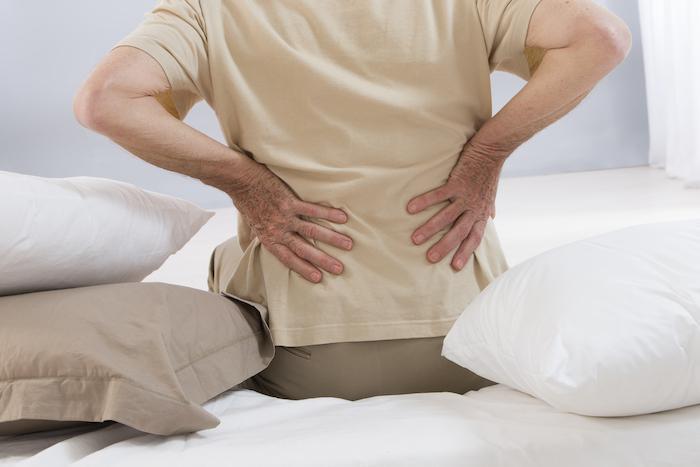What about my Back Pain, is it Normal?
Nearly 85% of men and women will have some form of neck or back pain during their lifetime. And, unfortunately, your chances of having back pain — especially in the lower part of your back — only increase as you grow older. That’s because the aging process leads to specific changes within your spine.
Your spinal column consists of 33 bones called vertebrae. You have a rubbery pad, or intervertebral disc, in between each of these bones that cushions your vertebrae and keeps them from rubbing against each other. Together, your vertebrae protect your spinal cord and nerves while also allowing flexibility and creating movement in your back.
As you grow older, your intervertebral discs begin drying out, wearing away, and shrinking. When this happens, you can start experiencing more stiffness and pain in your back as your vertebrae start rubbing against each other. It’s also common for the area around your spinal cord to grow more narrow. This condition, known as spinal stenosis, puts pressure on your spinal nerves and cord, which can trigger pain.
In this blog, we talk about the most common age-related degenerative changes and the steps you can take to lower your risk of back pain as you get older.
Age-related back problems
Just like the rest of your body, the structures that make up and support your spine change as you get older. Soft tissues like ligaments and muscles stretch and weaken, often leading to back pain.
You’re also more vulnerable to degenerative conditions that develop over the years, such as:
Herniated discs
The discs between each vertebra stabilize your spine, support spinal movement, and absorb shock when you move, whether you’re walking, running, jumping, bending, or twisting.
As you get older, wear-and-tear leads to weak areas in the disc’s outer cover. At first, the weak spot allows the inner layer of gel to bulge out from between the vertebrae. Eventually, the disc ruptures, the gel leaks out, and you have a herniated disc.
Once the disc herniates, you end up with back pain because the spine loses stability, the nerves get pinched, and inflammation develops.
Degenerative disc disease
Over the years, your spinal discs naturally lose moisture. As they dehydrate, they flatten, become less resilient, and fail to support your spine. You end up with localized back pain and compressed nerves.
Spinal arthritis
The joints that connect vertebrae, called facet joints, are just as susceptible to arthritis as the other joints in your body. In fact, osteoarthritis in the lower back affects 30% of adults over the age of 55.
You could also develop ankylosing spondylitis, an inflammatory form of spinal arthritis. Both types cause progressive joint damage, back pain, and limited movement.
Preventing back pain
It’s never too late to make changes that delay or prevent degenerative back problems. The same healthy habits also relieve back pain caused by an existing or future condition.
Our top preventive recommendations include:
Maintain a healthy body weight
Excess weight adds tremendous pressure to your lower back. For each pound you gain, you add 4 pounds of pressure to your spine when walking and 8 pounds when running. The extra pressure accelerates disc and facet joint degeneration and forces muscles to work harder.
Get regular exercise
Exercise strengthens the core muscles supporting your spine. Maintaining muscle strength and flexibility is one of the best ways to avoid painful back problems.
Getting regular exercise is important for easing the pain of any existing back condition, but it’s especially beneficial if you have arthritis. In addition to alleviating the pain, exercise slows down joint damage, reduces swelling, and improves movement.
While it’s hard to exercise when you’re in pain, we can help. We create a regimen of gentle exercises that fit your overall health, teach you about when to rest to protect your back, and give you tips for modifying daily activities that may cause back pain.
Watch your posture and ergonomics
Poor posture creates uneven pressure on your spine, forcing some muscles to work harder (causing muscle strain) and pushing vertebrae out of alignment. Bad posture alone causes back pain. It also magnifies the pain of degenerative back conditions.
Ergonomics include good posture but also involve the way you move your body. For example, lifting the wrong way is one of the most common causes of lower back pain. Slumping over when you sit also stresses your spine.
When you need help with back pain, we routinely evaluate your posture and recommend exercises or create a physical therapy plan to restore natural posture that supports your spine.
When you’re having back pain — even if it seems mild — you should schedule an appointment as soon as possible to get an accurate diagnosis. The sooner we can identify the cause of your symptoms, the faster we can develop a personalized strategy to address your symptoms and keep your condition from worsening.
Western Sydney Chiropractic Clinic Serves Suburbs – Chiropractor Near Me
Seven Hills NSW 2147
Kings Langley NSW 2147
Kings Park NSW 2148
Blacktown NSW 2148
Baulkham Hills NSW 2153
Norwest NSW 2153
Castle Hill NSW 2154
Rouse Hill NSW 2155
Kellyville NSW 2155
Kellyville Ridge NSW 2155
Schofields NSW 2762
Quakers Hill NSW 2763
Marsden Park NSW 2765
Box Hill NSW 2765
Rooty Hill NSW 2766
Stanhope Gardens NSW 2768
The Ponds NSW 2769

